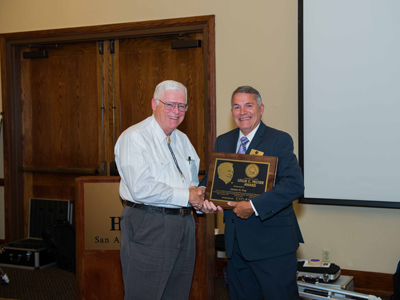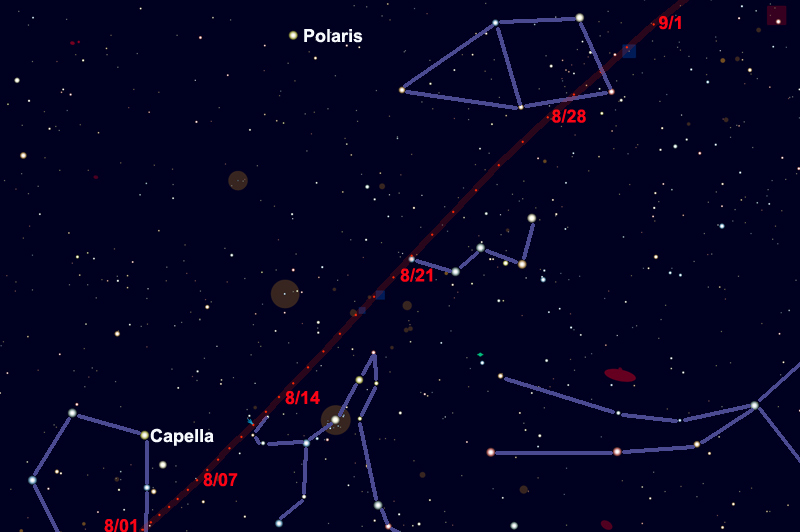 Having been “bitten by the bug” as a young boy in the 1950s, Jim began his amateur astronomy “career” as a member of a “Junior Moon-Watch Team,” eagerly awaiting the launch of the first artificial Earth satellites during the International Geophysical Year toward the end of that decade. But, unlike the young man in Walt Whitman’s famous poem, he never tired of the “Learn’d Astronomer” and quickly grew tired of simply gazing up at the beauty of the stars. He wanted to “Do something to contribute.”
Having been “bitten by the bug” as a young boy in the 1950s, Jim began his amateur astronomy “career” as a member of a “Junior Moon-Watch Team,” eagerly awaiting the launch of the first artificial Earth satellites during the International Geophysical Year toward the end of that decade. But, unlike the young man in Walt Whitman’s famous poem, he never tired of the “Learn’d Astronomer” and quickly grew tired of simply gazing up at the beauty of the stars. He wanted to “Do something to contribute.”
2014 Peltier Award presented to James Fox by Carroll Iorg, A.L. President at ALcon 2014 in San Antonio.
Like many amateur astronomers in the 1960s and 1970s, he made a variety of telescopes, grinding his own mirrors for many of them. But he always had that nagging urge to put them to use. While in college, Jim made a brief foray into variable star observing at the suggestion of a member of the astronomy department at Northwestern University where he was studying for an engineering degree. He admits that some “bribery” was involved.
After graduation, his local club joined the Astronomical League, and, at his first regional convention, Jim learned about the fascinating study of occultatioins – lunar grazing occultations in particular. During the next two decades, he led teams that successfully observed several dozen of these “grazes,” despite occasional encounters with deputy sheriffs, curious farmers and wandering cattle!
By the mid-1980s, Jim had a house and built his longtime dream: an observatory. Using his 8-inch refractor, Jim proceeded to make lunar and planetary observations for the Association of Lunar and Planetary Observers. Seeing was not too bad, considering his location in the suburbs of a major metropolitan area. But that changed shortly after the Shumacher-Levy 9 comet impacted Jupiter.
Not to be deterred, Jim acquired an Optec SSP-3 photoelectric photometer and began making photometric measurements of various targets. The refractor was soon replaced with an SCT for better balance. First, he worked directly with researchers who requested observations via IAPPP, then through the PEP committee of AAVSO. He eventually added the remote planets of Uranus and Neptune to his observing program. With the integration time of several seconds on the photometer, Jim found that scintillation noise was smoothed out when compared to visual observing. He continues to make several hundred PEP observations per year, and he currently chairs the PEP Committee for AAVSO.
This year’s Leslie C. Peltier Award goes to Astronomical League Past President: Jim Fox






 Having been “bitten by the bug” as a young boy in the 1950s, Jim began his amateur astronomy “career” as a member of a “Junior Moon-Watch Team,” eagerly awaiting the launch of the first artificial Earth satellites during the International Geophysical Year toward the end of that decade. But, unlike the young man in Walt Whitman’s famous poem, he never tired of the “Learn’d Astronomer” and quickly grew tired of simply gazing up at the beauty of the stars. He wanted to “Do something to contribute.”
Having been “bitten by the bug” as a young boy in the 1950s, Jim began his amateur astronomy “career” as a member of a “Junior Moon-Watch Team,” eagerly awaiting the launch of the first artificial Earth satellites during the International Geophysical Year toward the end of that decade. But, unlike the young man in Walt Whitman’s famous poem, he never tired of the “Learn’d Astronomer” and quickly grew tired of simply gazing up at the beauty of the stars. He wanted to “Do something to contribute.”